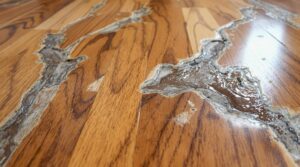Insurance payouts for carpet replacement hinge on several factors. The type of coverage—Replacement Cost Coverage or Actual Cash Value Coverage—affects the amount, with the former covering full costs and the latter factoring in depreciation. Coverage limits and deductibles also influence the final payout. Understanding policy details and potential exclusions, like gradual wear, enhances claim outcomes. Engaging with continued insights provides a deeper understanding of maximizing your claim and ensuring fair compensation.
Key Takeaways
- Replacement Cost Coverage pays for a new carpet without accounting for age or depreciation.
- Actual Cash Value Coverage considers depreciation, reducing the payout based on carpet age and condition.
- Coverage limits and policy type determine the maximum compensation for carpet replacement.
- Insurance payouts depend on the damage cause, aligning with covered perils like burst pipes or fire.
- Deductibles impact the final reimbursement, reducing the amount paid by the insurance.
Understanding Insurance Coverage Types for Carpet Damage
When considering the intricacies of insurance coverage for carpet damage, it is vital to understand the various types of policies available. Homeowner’s insurance typically covers damage from perils like fire, smoke, and water from burst pipes, while renter’s insurance protects tenants’ belongings, including carpets, against similar risks. However, it’s important to note that not all types of damage may be covered under these policies. For instance, homeowners insurance carpet damage coverage may exclude wear and tear or damage resulting from neglect. Therefore, it’s crucial for both homeowners and renters to carefully review their policies and consider additional riders or endorsements if their carpets are at a higher risk for certain types of damage.
Condo insurance (HO6) extends coverage to personal items within a condominium unit, including carpets. Dwelling coverage, part of homeowner's or condo insurance, may also facilitate carpet repair or replacement.
Additionally, understanding policy exclusions, such as those for flooding or gradual wear and tear, is important for accurate insurance policy comparisons. Carpet maintenance tips may help prevent damage that insurance does not cover, such as pest infestations or intentional acts.
Notifying the insurer promptly and complying with policy terms guarantees coverage validity. Steering through these policy nuances empowers individuals to make informed decisions about safeguarding their carpets.
Calculating Your Carpet Replacement Payout

Calculating your carpet replacement payout requires a thorough understanding of the insurance coverage options available. Two primary methods exist: Replacement Cost Coverage and Actual Cash Value Coverage. The former disregards carpet lifespan and depreciation, paying for a similar new carpet based on current prices. Conversely, Actual Cash Value Coverage considers depreciation methods, reducing payout by the carpet's depreciated value.
| Coverage Type | Key Features |
|---|---|
| Replacement Cost Coverage | Pays full cost of a new carpet, ignoring age and wear. |
| Actual Cash Value Coverage | Considers depreciation, paying the reduced market value. |
| Depreciation Methods | Essential for calculating Actual Cash Value Coverage payouts. |
| Carpet Lifespan | Impacts depreciation calculations for Actual Cash Value Coverage. |
| Insurance Estimate Components | Include quantity, unit price, depreciation, and recoverable depreciation. |
Understanding these factors, including how carpet lifespan and depreciation methods affect calculations, is crucial for determining the payout. The specifics of the policy and state laws further influence the final amount insurers will cover.
Common Perils That Qualify for Carpet Coverage

While evaluating insurance claims for carpet damage, understanding the common perils that qualify for coverage is vital.
Water leaks are a frequent cause of carpet damage and various scenarios are typically covered. For instance, burst pipes and sudden, accidental leaks from appliances or tanks like water heaters usually qualify for coverage. In addition, overflow incidents from washing machines, dishwashers, sinks, toilets, and showers are generally included under policy protections.
Fire damage is another significant peril that can affect carpets. Insurance typically covers fires resulting from electrical issues, kitchen mishaps, and heating system malfunctions. Moreover, smoke damage from fires in adjacent properties and accidental fires from sources such as candles and cigarettes are often included.
Understanding these perils helps policyholders anticipate coverage possibilities. Each claim must meet specific criteria set by the insurance provider, ensuring the event is sudden and accidental to qualify for reimbursement.
Clarity in the policy's terms is essential for successful claims.
Maximizing Your Insurance Claim for Carpet Replacement

Effectively steering through the complexities of an insurance claim for carpet replacement requires meticulous attention to detail and a thorough understanding of policy stipulations.
Claim negotiation begins with verifying that the cause of damage aligns with a covered peril outlined in the policy. Coverage limits play a pivotal role in determining the extent of compensation.
Policyholders should take the following steps:
- Secure Professional Estimates: Obtain detailed assessments from qualified carpet repair specialists to substantiate the claim.
- Understand Deductible Implications: Recognize how deductible choices affect out-of-pocket expenses and the total reimbursement.
- Review Policy Terms: Comprehend the exclusions and conditions, ensuring the claim meets all necessary criteria.
- Prompt Submission: Timely and complete submission of the claim is essential for successful processing.
Clear documentation and adherence to policy requirements can greatly enhance the chances of a favorable outcome.
Documentation Requirements for Carpet Insurance Claims

When filing a carpet insurance claim, meticulous documentation is vital to guarantee a smooth and successful process. Claim documentation begins with the initial inspection, where an insurance adjuster evaluates the damage.
Photographic evidence submission is critical; clear images of the damaged carpet, showing all affected areas and potential causes, bolster the claim. A detailed description of the damage, including the origin and extent, must accompany these visuals.
Repair estimates from qualified professionals are necessary to substantiate the repair costs. Incident reports from authorities or professionals can further support the claim's legitimacy.
Additionally, policy documentation, consisting of the insurance policy terms and coverage limits, must be on hand to confirm compliance. Furthermore, evidence of the carpet's age and value, along with receipts for purchase and prior repairs, is required.
Finally, submitting policyholder information, such as name, contact details, and policy number, guarantees all aspects of the claim are thoroughly documented.
The Benefits Of Consulting A Public Adjuster

Consulting a public adjuster offers significant advantages throughout the insurance claim process for carpet replacement.
Their expertise in insurance claims and objective damage assessment guarantees accurate and thorough documentation of all damages, enhancing the likelihood of a favorable outcome.
Expertise In Insurance Claims
Steering through the intricacies of insurance claims can be intimidating; consequently, consulting a public adjuster offers significant advantages. Their expertise in policy nuances and claim challenges is invaluable.
Public adjusters possess:
- Comprehensive Policy Knowledge: They interpret fine print skillfully, ensuring all entitled benefits are received.
- Documentation and Paperwork Assistance: They organize necessary paperwork, facilitating smooth claim preparation.
- Negotiation and Advocacy: Skilled negotiators maximize claim settlements and understand insurance tactics designed to minimize payouts.
- Regulatory Compliance: Licensed by entities like the Texas Department of Insurance, they comply with state regulations.
Objective Damage Assessment
Managing insurance claims often requires an extensive understanding of policy details, which is where a public adjuster's expertise becomes beneficial.
Through detailed property examination, these professionals conduct thorough evaluations to guarantee precise damage identification. Licensed experts assess and document all damages, including those easily overlooked, thereby maximizing potential settlements.
Public adjusters excel at accurate damage documentation by organizing essential paperwork such as damage assessments, repair estimates, and proof of loss. This meticulous documentation underpins claim accuracy, facilitating fair negotiations with insurance companies.
Their objective evaluation is unbiased, ensuring claimants receive just compensation. By interpreting policy details, they ascertain all entitled benefits are claimed.
Ultimately, public adjusters present detailed claims to insurance companies, preventing delays due to incomplete information.
Streamlined Claim Process
When maneuvering the complexities of insurance claims, consulting a public adjuster can greatly simplify the process. Their involvement streamlines the claims process by offering policyholder support through professional guidance and efficient communication.
Here are the key benefits:
- Simplification of Claim Filing: Public adjusters manage paperwork and documentation, ensuring all necessary information is gathered and organized, reducing potential errors.
- Efficient Communication: They act as a liaison between the policyholder and the insurer, negotiating fair settlements and keeping the policyholder informed.
- Time and Stress Savings: By handling negotiations and communications, they allow policyholders to focus on recovery and alleviate stress.
- Professional Guidance: They provide expertise in maneuvering insurance policies, ensuring all benefits are received and legal requirements are met.
Higher Claim Payouts & Settlements
Engaging a public adjuster not only streamlines the claims process but also greatly enhances the potential for higher claim payouts and settlements.
Public adjusters possess negotiation expertise, enabling them to effectively employ negotiation strategies with insurance companies. According to a study by OPPAGA, they negotiate, on average, 574% larger settlements than homeowners achieve independently.
Their detailed assessments guarantee thorough documentation of damages, maximizing payout potentials. By operating on a contingency basis, they are motivated to secure the best possible higher settlement for policyholders, often eliminating the need for upfront costs.
Public adjusters offer professional representation, handling complex claims with objective analysis and expert guidance, ultimately securing fair compensation for property damages and safeguarding financial interests through increased payouts.
About The Public Claims Adjusters Network (PCAN)

The Public Claims Adjusters Network (PCAN) serves as an essential resource for policyholders managing the complexities of insurance claims. Public adjusters within PCAN specialize in claims management, adeptly handling intricate matters such as insurance coverage layers, inventory, and property valuation. Their role is critical in guaranteeing that policyholders receive a fair settlement by meticulously reviewing policies and estimating repair costs.
Furthermore, they streamline communication with insurance companies, thereby easing the burden on policyholders.
PCAN enhances claim outcomes through several key functions:
- Advocacy for policyholders: Public adjusters negotiate on behalf of policyholders to secure equitable treatment and settlements.
- Professional representation: They exclusively represent policyholders, avoiding conflicts of interest.
- Efficient claims handling: Their expertise in documenting, evaluating, and negotiating claims guarantees prompt resolution.
- Stress reduction: By managing the entire claims process, they allow policyholders to focus on their personal affairs.
This network effectively maximizes financial recovery for policyholders.
Frequently Asked Questions
How Does Carpet Age Affect Insurance Payout for Replacement?
Carpet depreciation considerably influences insurance policy payouts for replacement. The payout decreases as the carpet ages, with higher depreciation rates applied, reducing the actual cash value. Documentation substantiating carpet age and condition is critical for accurate claim processing.
Can I Choose New Carpet Different From the Original During Replacement?
Upon evaluating replacement options, individuals may wonder about carpet upgrades. Insurance policies often dictate that replacements match the original's characteristics, requiring approval and documentation. Policy specifications, expert opinions, and insurer assessments guide decisions for alternative carpet selections.
Does Insurance Cover Carpet Replacement Due to Pet Damage?
Insurance generally does not cover carpet replacement due to pet damage. Pet insurance coverage usually excludes such incidents. Damage assessment may reveal exclusions, leaving homeowners responsible for costs. Understanding policy exclusions is essential for managing coverage expectations.
Are Labor Costs Included in the Carpet Replacement Coverage?
According to industry data, 60% of policies include labor costs within carpet replacement coverage. Coverage limits vary by policy, influencing the claim process. Thorough documentation and adherence to policy terms are essential for successful labor cost claims.
How Do I Appeal a Denied Carpet Replacement Claim?
To appeal a denied carpet replacement claim, one must review claim documentation for deficiencies, understand the appeal process, submit a detailed written appeal with new evidence, and follow up with the insurance company to guarantee reconsideration.








